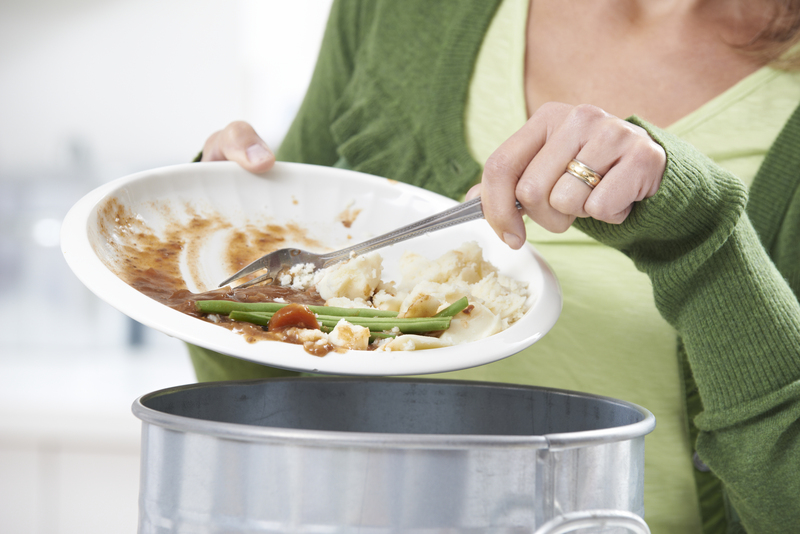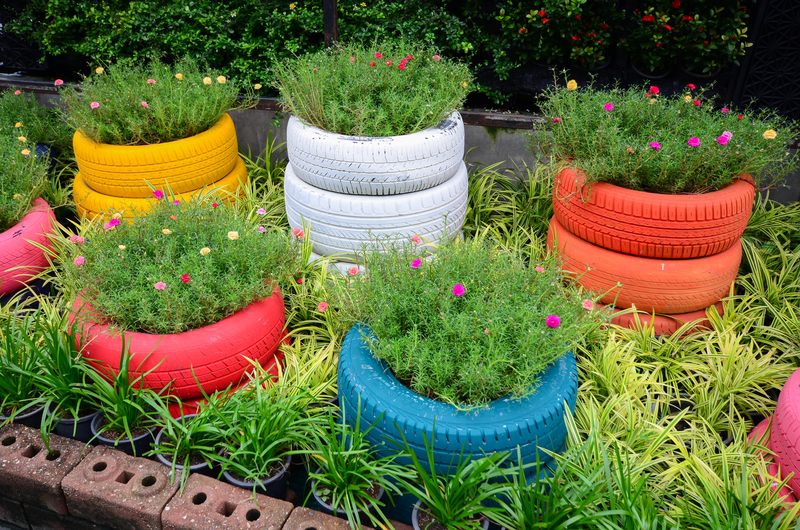Microplastic Crisis: Finding Effective Solutions
The invisible threat of microplastics is rapidly becoming one of the most pressing environmental concerns of our time. These tiny particles, less than 5mm in size, now permeate our oceans, rivers, soils, and even the air we breathe. As awareness grows, so too does the demand for actionable, lasting solutions. This comprehensive article delves into the causes and impacts of the microplastic crisis, examines pioneering research, and highlights innovative strategies for tackling microplastic pollution. Join us to discover the most effective solutions to this growing environmental challenge.
Understanding Microplastics and Their Widespread Impact
Microplastics are minuscule plastic fragments resulting from the breakdown of larger plastic items or manufactured as microbeads for use in consumer products. Because of their small size, they often evade filters and systems designed to trap regular waste, making them notoriously difficult to remove from the environment once they've entered it.
Types of Microplastics
- Primary Microplastics: Intentionally manufactured small plastics such as microbeads in cosmetics, cleaning products, and industrial abrasives.
- Secondary Microplastics: Result from the degradation of larger plastic products like bottles, bags, and fishing nets under the influence of sunlight, wind, and waves.
Where Are Microplastics Found?
Microplastics are everywhere: from deep-sea trenches and Arctic ice to tap water, seafood, and even the air we breathe. According to multiple studies, trillions of microplastic particles are estimated to be present in the world's marine environments, with new plastic debris entering the ecosystem every day.

Major Sources of Microplastic Pollution
To effectively address the microplastic crisis, it's crucial to understand its primary sources:
- Plastic Waste Mismanagement: Inefficient recycling and improper disposal allow plastics to break down in natural environments, releasing micro-particles over time.
- Synthetic Textiles: Washing synthetic clothes releases microfibers into wastewater. One load of laundry can release hundreds of thousands of microfibers.
- Personal Care Products: Items like exfoliants, toothpaste, and facial cleansers may contain microplastic beads.
- Tire Wear: Friction between tires and road surfaces creates small rubber particles, a significant and often overlooked source of microplastics.
- Industrial Processes: Production, transportation, and accidental spills of plastic pellets (nurdles) contribute directly to microplastic presence in the environment.
Why the Microplastic Crisis Demands Urgent Action
The impacts of microplastic pollution extend far beyond visible environmental damage. They are now recognized as a threat to the global food chain, human health, and biodiversity.
Environmental Impact
- Harm to Marine Life: Marine animals mistake microplastics for food, leading to internal injuries, starvation, and sometimes death.
- Transport of Pollutants: Microplastics attract and carry toxic chemicals and heavy metals, further polluting water and soil ecosystems.
- Biodiversity Loss: The presence of microplastics disrupts habitats, reduces reproductive rates, and affects species at all levels of the food web.
Risks to Human Health
- Food Chain Contamination: People ingest microplastics through seafood, salt, water, and even air, with unknown long-term health consequences.
- Potential Toxins: Microplastics may absorb and concentrate harmful chemicals, which can be released into the human body upon ingestion.
- Respiratory Issues: Inhalation of airborne microplastics can lead to lung irritation and other respiratory conditions.
Economic Costs
- Clean-Up Expenses: Removing microplastics from beaches, waterways, and drinking water supplies demands significant resources.
- Impact on Industries: Tourism, fishing, and aquaculture suffer due to pollution and declining marine health.
Microplastic Crisis: Strategies and Effective Solutions
Tackling the microplastic crisis requires a combination of policy action, technology innovation, and behavioral change on individual and societal levels. Let's explore the most promising approaches:
1. Regulatory and Policy Solutions
- Plastic Bans and Restrictions: Many governments have banned or restricted single-use plastics and microbeads in cosmetics. Countries like the UK, Canada, and India are leading with comprehensive legislation.
- Extended Producer Responsibility (EPR): Policies that make manufacturers responsible for the entire lifecycle of plastic products, including collection, recycling, and safe disposal.
- International Cooperation: Global treaties and conventions, such as the UN Plastics Treaty, are pushing for a unified approach to reduce plastic production and waste.
2. Technological Innovations
- Advanced Wastewater Treatment: Upgrading filtration systems in wastewater plants to capture more microplastic particles before they enter rivers and oceans.
- Biodegradable Alternatives: Research into biodegradable plastics made from renewable sources like algae or cornstarch offers hope for reducing persistent plastic residues.
- Microplastic Capture Technologies: Devices such as washing machine filters and external microfiber catches can significantly reduce microfiber pollution from household laundry.
3. Corporate and Industry-Led Initiatives
- Sustainable Packaging: Companies are shifting towards zero-waste packaging and using compostable or recyclable materials to lessen reliance on plastics.
- Textile Innovation: The fashion industry, a significant source of microplastics, is investing in alternatives like natural fibers, recycled textiles, and eco-friendly clothing care.
- Tire Technology: Innovations aimed at producing harder-wearing tires and capturing wear particles are in development, reducing an often-ignored source of microplastic contamination.
4. Scientific Research and Monitoring
- Global Monitoring Networks: Improved tracking and monitoring systems allow scientists to map microplastic distribution and trends over time.
- Impact Assessment: Funded studies are uncovering how microplastics affect ecosystems and human health, guiding policy and innovation.
5. Personal Actions and Community Engagement
- Reducing Plastic Use: Choosing reusable bags, bottles, and containers.
- Avoiding Microbeads: Checking labels to avoid personal care products containing microplastics.
- Supporting Sustainable Brands: Opt for companies committed to reducing plastic and environmental impact.
- Community Clean-Ups: Participating in or organizing local clean-ups to reduce plastic pollution at its source.
Innovative Solutions on the Horizon
As the scientific community unites to combat the microplastic crisis, visionary projects are emerging that could redefine our approach to plastic pollution:
Bioengineered Solutions
- Microbial Degradation: Scientists are exploring bacteria and fungi capable of breaking down microplastics into safer organic compounds.
- Enzyme-Based Plastics Decomposition: Enzymes like PETase offer promising breakthroughs in decomposing persistent plastics more efficiently.
Green Chemistry
- Safe-by-Design Plastics: Developing materials that, by their chemical structure, degrade harmlessly at end-of-life while retaining utility.
- Eco-Friendly Additives: Researchers are formulating additives that help plastics degrade faster and more cleanly, minimizing microplastic residue.
Citizen Science and Data-Driven Policy
- Public Participation: Crowdsourced data and apps empower citizens to report plastic pollution, tracking its movement and informing policy.
- Open-Source Solutions: Collaborative development of tools and data standards accelerates the sharing of best practices globally.
Obstacles to Addressing the Microplastic Crisis
While the world is making strides in confronting the microplastic crisis, certain barriers impede rapid progress:
- Lack of Harmonized Regulations: Inconsistent laws globally make enforcement and progress slow.
- Technological Gaps: Existing plastic alternatives and capture technologies require further development to be cost-effective and scalable.
- Limited Public Awareness: Many consumers are still unaware of the prevalence and risk of microplastics in everyday life.
- Corporate Resistance: Some industries have financial incentives to delay the adoption of sustainable practices.

How You Can Help Combat Microplastic Pollution
Eager to make a difference in the fight against the microplastic crisis? Here are actionable steps every individual can take:
- Choose natural fibers like cotton, wool, or hemp when buying clothes, and wash less frequently to reduce microfiber shedding.
- Advocate for stronger policies by supporting petitions, contacting representatives, and spreading awareness online.
- Reduce single-use plastics: Bring reusable bags, cups, and utensils wherever you go.
- Support brands leading the charge against microplastics through sustainable product choices.
- Participate in local clean-up events and initiate conversations in your community about plastic pollution prevention.
The Future: From Awareness to Action
The microplastic crisis is a multi-faceted challenge that demands coordinated, international effort, relentless innovation, and public dedication. While progress has been made--from legislative bans to technological breakthroughs--the journey is far from over. Every action, no matter how small, contributes to a cleaner, healthier planet for present and future generations.
By supporting cutting-edge solutions, advocating for strong policies, and making conscious consumer choices, we can collectively turn the tide on microplastic pollution. Let's embrace this challenge as an opportunity to rethink our relationship with plastics and chart a sustainable course for our world.
Together, we can move from awareness to action, securing a future free from the burdens of microplastic pollution.